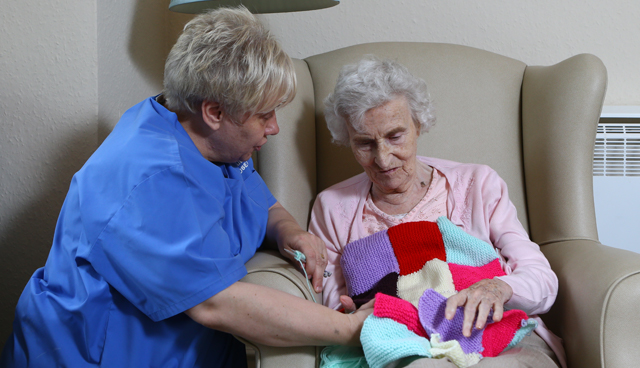Minding the care gap

With the Irish population set to increase and become older on average, the demand for at-home caregivers is predicted to increase while the number of family carers is predicted to decrease. Such a scenario threatens to open a significant care gap in Ireland.
Family caregivers are the main source of care provision in Ireland for those in need due to long-term illness, disability, or frailty. A care gap could “increase markedly” in Ireland by 2030 unless government policy addresses the oncoming crisis, according to Family Carers Ireland.
In its submission to the Oireachtas Joint Committee on Health, Family Carers Ireland said that “for the current level of ‘co-production’ of home care to be sustained, the ratio of family carers will have to increase from one in 10 to one in five by 2030”. In his Spotlight report for the Oireachtas, Mind the care gap: Exposing the healthcare system’s vulnerability to the gap between family care provision and anticipated demand, Diarmaid O’Sullivan, Senior Parliamentary Researcher, Social Science writes that the “demand for care at home is likely to increase dramatically due to a rising ageing population, the shift away from institutional care for people with disabilities and an increased emphasis on home-based care”.
The ESRI has also predicted a sharp increase in future demand for home care in Ireland. In its Projections of Demand for Healthcare in Ireland, 2015-2030 report, its indicates that demand for home care (and by proxy, family care) will increase between 48.4 per cent and 65.9 per cent, while also predicting that the supply of family carers will be limited by a number of demographic, political and social factors such as a decline in fertility, the delay in the average age of starting a family and increased labour force participation by women.
The estimation of the value of family care to the State varies depending on the method of valuation used and the source, but estimates range from €2 billion to €10 billion, a valuation that O’Sullivan says serves “to underscore the dependency of the health system on family care and its vulnerability to any future shortage in family carers”.
O’Sullivan suggests that there are a range of policy factors that must be considered when it comes to the demand for and provision of home care, specifically “factors affecting women” given that the majority of care in Ireland and the world generally is carried out by women. He also points to a concerted effort within the Irish health system to shift care delivery to the home and the community while calling the National Carers Strategy “ambitious” but noting that it has been “constrained through lack of dedicated funding”. In her foreword to the strategy, then Minister of State for Primary Care, Mental Health and Disability Kathleen Lynch specifically mentioned that many measures had been chosen due to their being “cost neutral”.
Disability policy is also mentioned within the report, with emphasis that it too “seems to be in tension with carer policy potentially to the detriment of implementing both”. Another issue is the fact that the majority of family caregivers combine their care role with paid employment. Irish legislation for temporary care leave is said to be “progressive compared to other European countries” but take up of the leave is low compared to those countries. This has been blamed on a number of factors including low awareness of the scheme, unsuitability between the structure of the scheme and people’s care needs, fear of negative career consequences from taking an extended leave and the personal and economic costs of doing so.
In November 2019, the Oireachtas Joint Committee on Health published their Report on the Provision of Homecare Services. Coming after the March 2019 publication of the Oireachtas Spotlight report, this report has further served to illustrate the challenges facing the provision of home care and family care in Ireland. Committee Chair Michael Harty TD writes within the report that evidence given to the committee “detailed a system that is under much pressure”.
Pointing to the lack of autonomy for recipients who struggle to access homecare packages and the changing systems and silos that they have to access, Harty also acknowledges that “as homecare is provided in a private setting, many of these problems are unseen and have received less public attention”.
|
The report also carries with it nine recommendations for how to address the predicted care gap crisis. 1. The enactment of legislation underpinning the provision of homecare. 2. The regulation of homecare by HIQA or another independent body. 3. That family carers are provided adequate support to incentivise informal homecare support. 4. That formal care should be delivered by appropriate qualified service providers. 5. That the recommendations published in the Report of the Independent Review Group established to examine the role of voluntary organisations in publicly funded health and personal social services be fully implemented to improve and drive the relationship between the HSE and voluntary homecare service providers. 6. That the HSE records and publishes details of the number of people on waiting lists for homecare and that such lists are updated and published on a regular and continuous basis. 7. That the Single Assessment Tool is implemented. 8. That the HSE engage in an open and transparent discussion with the voluntary sector in relation to planning and providing for current and future demand of homecare services and the financial capacity of the voluntary sector in providing homecare services. 9. That an analysis be undertaken by the Department of Health and the Department of Public Expenditure and Reform, to examine the financial challenges of the voluntary sectors and their ability to provide homecare services. |
While the EU population is projected to increase out to 2080, the proportion of children within the population is predicted to decrease, meaning that the provision of care will be all the more important as Ireland’s population becomes older on average. The total dependency ratio is already on the rise in the country, with the rate rising from 45.8 per cent in the 2006 census to 52.7 per cent in 2016, with older dependency standing at 20.4 per cent for the State.
The Department of Health estimated in 2018 that there would be a 70 per cent increase in demand for homecare over the following 15 years, including a 46 per cent demand increase for primary care and a 39 per cent increase in the need for long-term residential care. In 2019, it was estimated that a further one million hours of care would be needed to meet 2020 demands in Ireland.
The Joint Committee report acknowledges this impasse, that while staffing numbers have increased within healthcare as a whole, they have not increased to the level required to satisfy demand and noting “the increasing number of unmet hours for homecare services despite additional funding”. The report also says that the current system is “too reactionary in how it provides services” and acknowledges that the work and actions set out within Sláintecare will address these issues.





